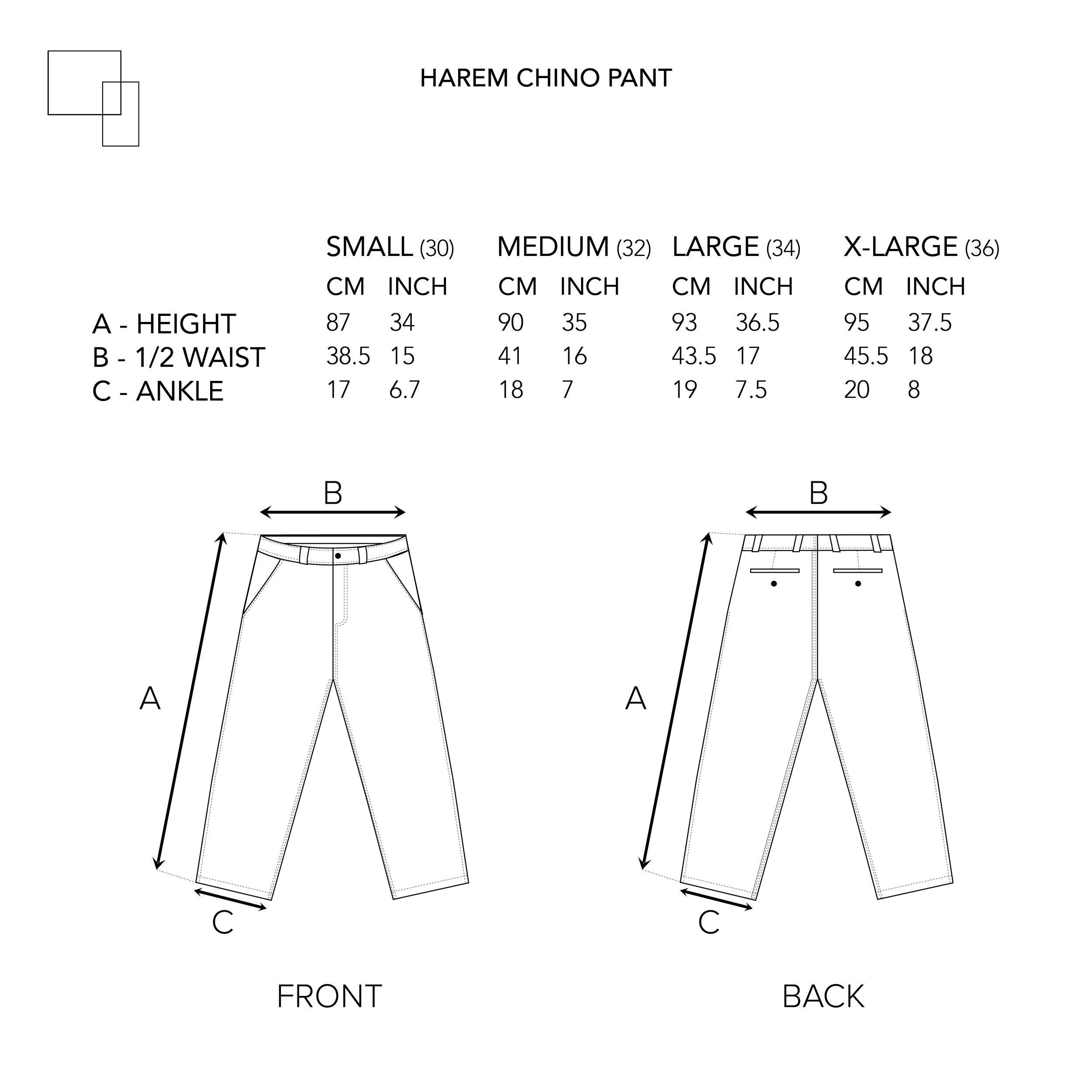 Image 1 of 4
Image 1 of 4

 Image 2 of 4
Image 2 of 4

 Image 3 of 4
Image 3 of 4

 Image 4 of 4
Image 4 of 4





Harem Chino Pant (Green)
100% Cotton Twill
Extra heavyweight fabric
Nephrite Green
Harem inspired fit which is baggier at the upper leg with an ankle cut
Flat-felled double-stitched seams with double jet back pockets
High front & back rise
Embroidered logo on the front pocket
Avoid washing unless you really have to | Hand wash | Hang dry, do not tumble dry | Iron medium-hot
Model is 174cm and wears a size M
Recommended Pairing: Rave Lights T Shirt
Read more below
100% Cotton Twill
Extra heavyweight fabric
Nephrite Green
Harem inspired fit which is baggier at the upper leg with an ankle cut
Flat-felled double-stitched seams with double jet back pockets
High front & back rise
Embroidered logo on the front pocket
Avoid washing unless you really have to | Hand wash | Hang dry, do not tumble dry | Iron medium-hot
Model is 174cm and wears a size M
Recommended Pairing: Rave Lights T Shirt
Read more below
100% Cotton Twill
Extra heavyweight fabric
Nephrite Green
Harem inspired fit which is baggier at the upper leg with an ankle cut
Flat-felled double-stitched seams with double jet back pockets
High front & back rise
Embroidered logo on the front pocket
Avoid washing unless you really have to | Hand wash | Hang dry, do not tumble dry | Iron medium-hot
Model is 174cm and wears a size M
Recommended Pairing: Rave Lights T Shirt
Read more below
History
The Harem Pant or trousers dates back as far as almost 2000 years ago. The term, believed to have originated from tunic-like dresses called Dhoti, was associated commonly with traditional men’s garment in the East.
In 1911, Paris couturier Paul Poiret introduced harem pants as part of his efforts to reinvent and 'liberate' Western female fashion.
The design was then made popular in Western Culture kudos to Amelia Bloomer who took Harem Pants and used them as a uniform for Feminists who wanted to fight for their rights.
“These trousers would represent freedom and liberation with their higher hemlines and masculine connotations.”

